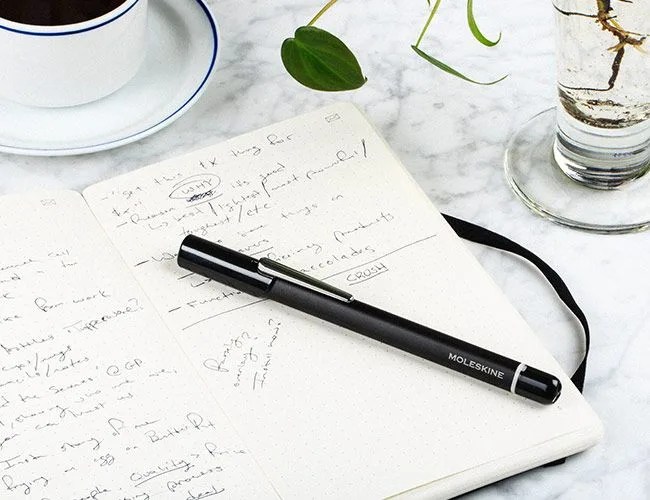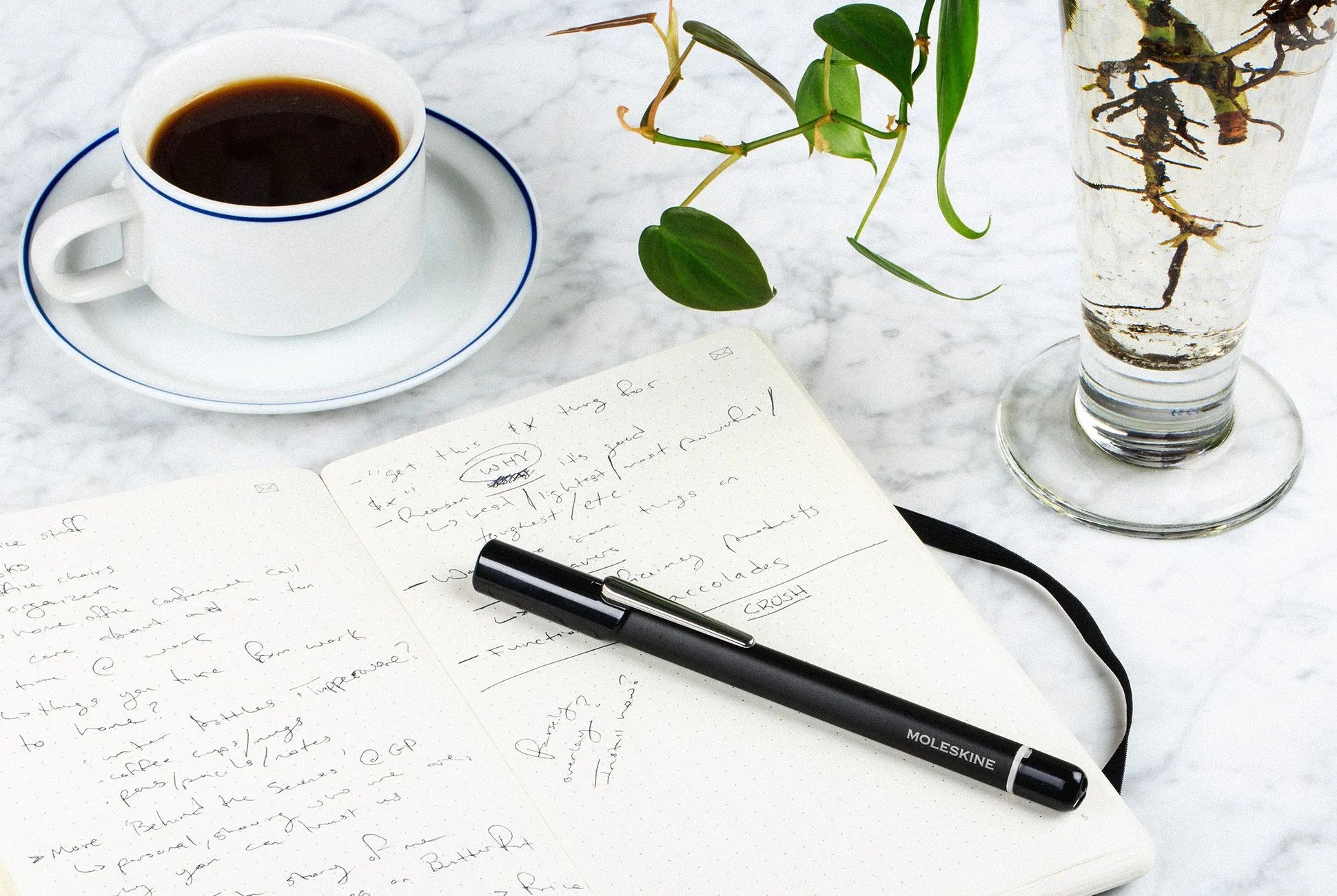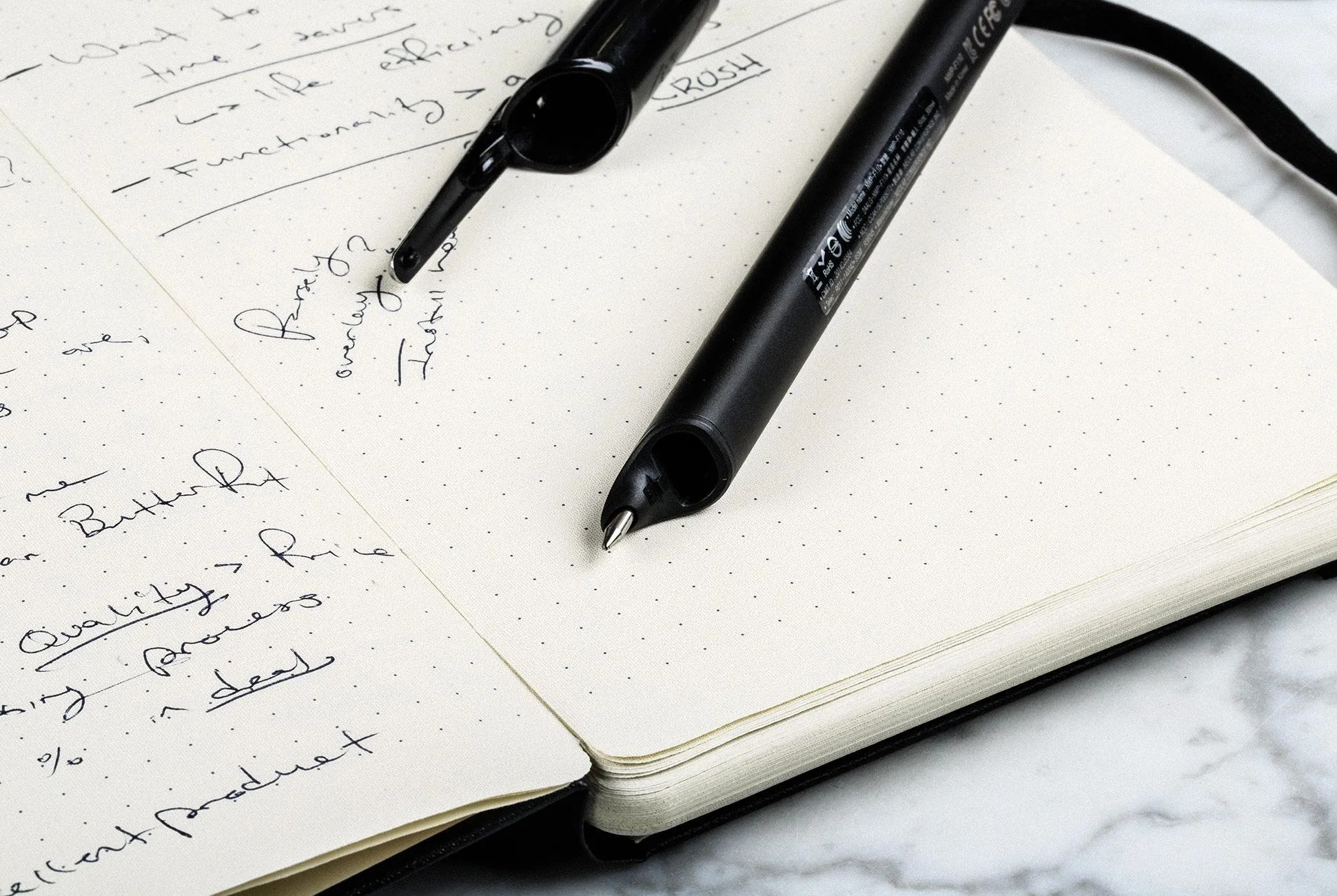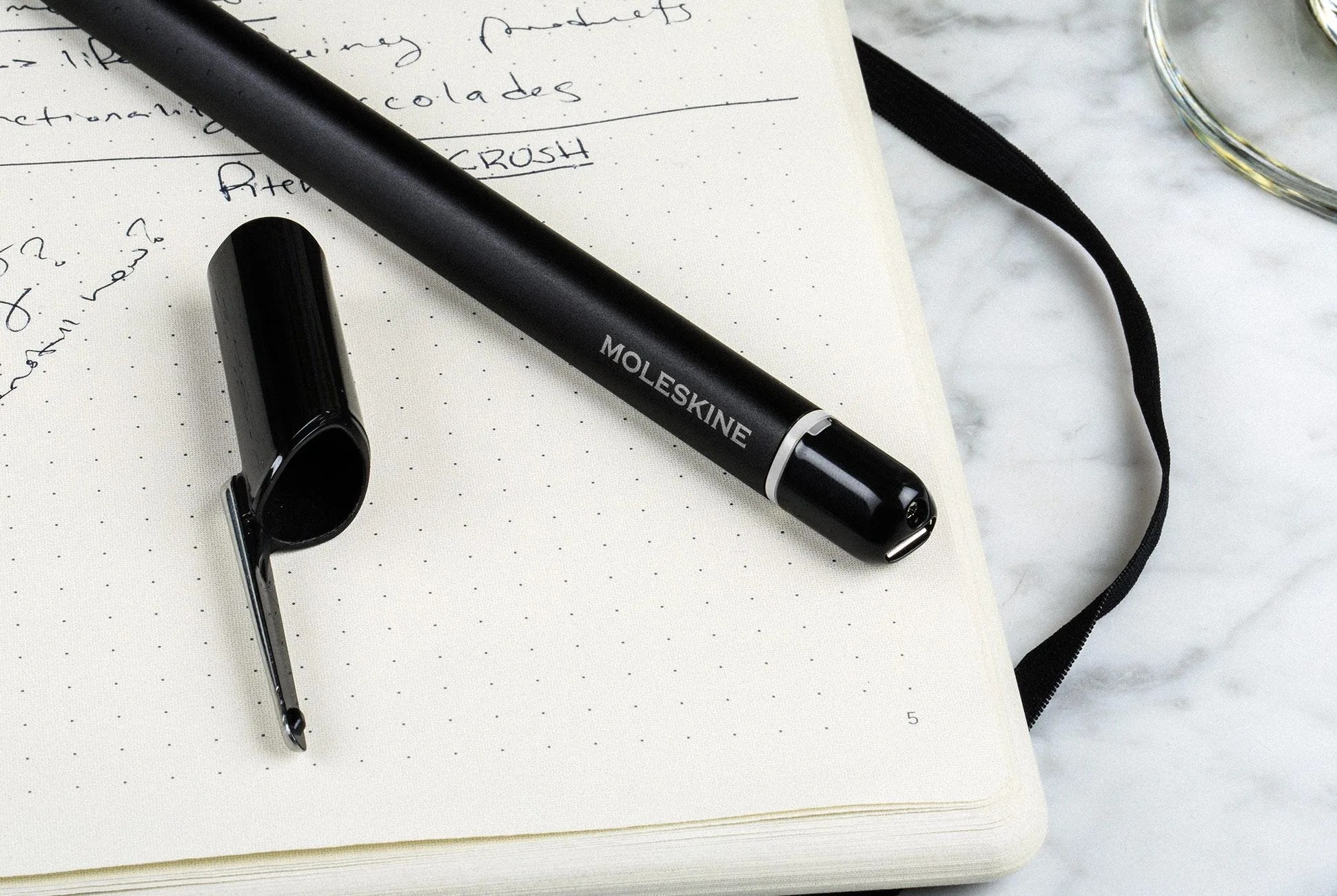3 photos
By this point, Moleskine isn’t new to the digitization of handwritten text. The brand’s first jump into the e-notetaking game was back in 2012, and came in the form of a collaboration with Evernote to make the Evernote Smart Notebook ($20), a notebook harnessing Evernote’s Page Camera function to transfer your written notes to digital format on your smartphone or desktop. Four years later, Moleskine went it alone and released the Smart Writing Set ($200), which included its first electronic writing tool in the Pen+ smartpen — a battery-charged pen with a tiny camera in the head that tracks your scrawling — and a notebook (called a Paper Tablet) using a special paper (available in dotted, ruled and plain) that’s designed to track the Pen+’s movements and markings.
Now, the Italian pen and paper giant has added a standalone smartpen, called the Pen+ Ellipse ($179), to its Smart Writing System flock. The primary (and almost sole) difference between the Pen+ Ellipse and the Pen+ is the ability to purchase the Ellipse alone (it does come with a “Starter Journal,” but this is not meant for use with smartpens).
The Good: The physical pen uses a Neo smartpen frame made of sturdy, matte aluminum. Other than the aforementioned ‘standalone’ status of the Ellipse, it allows you to write and record even if Moleskine’s accompanying notes app isn’t active (so long as the pen itself is switched on). The next time you open the app with your pen on and attached, you’ll get a notification asking if it can upload the data from your previous session. This cuts the things you have to remember to turn on from two to one, which is more helpful than one might think. I also found the email PDF function, which manifests itself as a letter logo in the upper right of each page, fairly useful. You can tap the logo with the pen and your smartphone will open an email with a PDF file of the page ready to send.
What to Watch Out For: The pen itself is quite uncomfortable to actually write with. It’s much bulkier than your typical pen, and it has a uses a mock fountainhead (the gap being where the tiny camera sits) that was rather finicky to keep an even stroke with. At first, I thought this was just me getting used to the pen itself, but having used it for about a week-and-a-half, I’m not so sure.
The M+ Notes app, Moleskine’s app to view and edit your notes, sports a few potentially neat features that unfortunately just didn’t work as well as I wanted them to. Namely, the transcribe function, which aims to read your handwriting and convert it to digital text. Having admittedly poor handwriting, I tested it with other co-workers who aren’t penmanship-challenged and it remained inconsistent to the point where it’s not overly useful. Beyond this, I found writing on the dotted-nCode paper tiresome, and I’d prefer to simply write between lines or on a blank sheet. Petty? Maybe.




